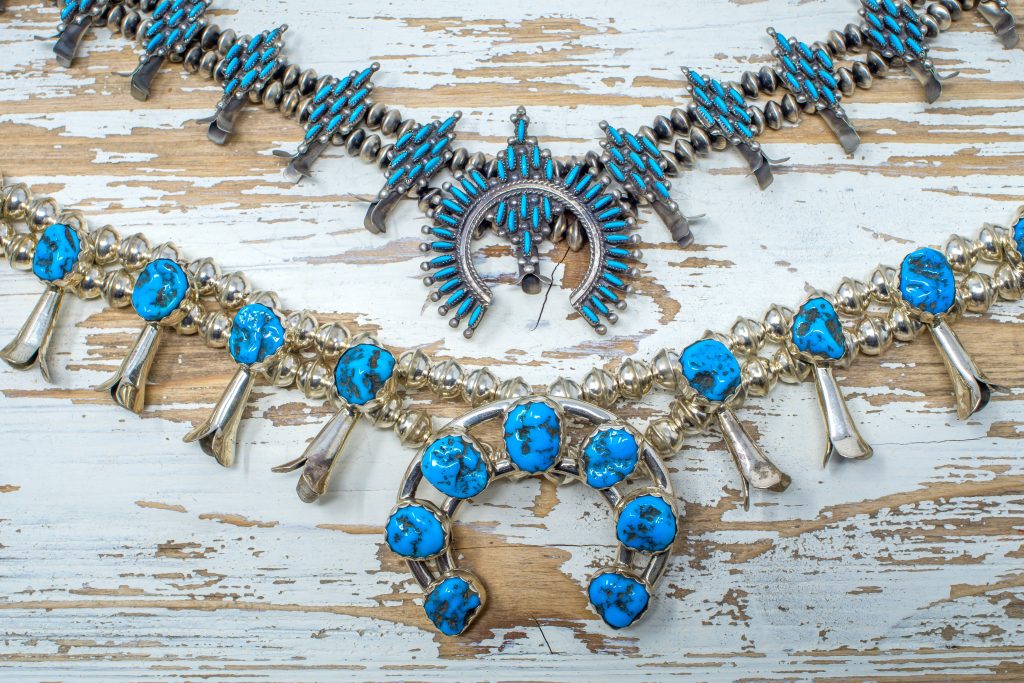
History of the Navajo Squash Blossom
With western fashion becoming more and more prominent in the western industry, we thought we would take the time to highlight the culture and history of one of the most notable items in western fashion, the “Squash Blossom”. There’s more to this unique shape than you might think! The humble flowering part of the squash fruit is known as squash blossom. It spreads outwards and is used for cooking purposes. But that’s not the squash blossom we are talking about here. This article is actually focused on the Native American piece of jewelry created by Navajo Jewelry Makers.

History of the Squash Blossom
Before we can enlighten you about the history of this piece of jewelry, it is imperative to understand its basic shape and make. The center of attention is the inverted crescent or the Naja. It is surrounded on both sides by the flowering beads which are the only part of this piece of jewelry that resembles their namesake.
The inverted crescent or Naja is a Navajo symbol but as we said before, its history and origins are actually much more interesting. The inverted crescent has been used as a pendant and talisman for protection against the evil eye and evil forces or as a symbol of prestige by many civilizations. From the Paleolithic to the Romans and Cretans, it was used in a number of places.

The inverted crescent is also prevalent in the Middle East. From here, the Muslim Moors brought it with them as a ward against the evil eye into Spain. Coupled with the long centuries of Muslim rule over Spain, the symbol eventually entered the cultural consciousness of Spain. From Spain, it traveled with the conquistadors to South America where it left an impression on local tribes and peoples, eventually spreading in their ornaments and jewelry until it came to be strongly associated with them.
That is quite an interesting journey for an upside-down crescent to have. As for the six flowers on each side, there are competing theories —each of which is more interesting than the last. Some say they have more to do with pomegranate-shaped ornaments of the Spanish which were impressed upon the Navajo while others say they were inspired by the local squash blossom which was a very important and widespread crop for the Navajo. Then of course, there is the gemstone, turquoise which does hold a special place to the Navajo. turquoise is simply a bringer of good fortune. The Navajo would store it in baskets or hang it from the ceilings to ward off evil in the home, and they would surround the exteriors of homes or graves with it for the same reason. In its simplest meaning, warriors would carry it to battle for strength and protection, hunters would bring it on excursions to promote luck and safety. Tribespeople would give it as gifts or symbols of kinship.

Similarly, there are competing views about the origin of the name, which are either a result of losses in translation or deliberately based on the flower. Whatever the truth behind these theories, one thing is true. Despite its use by other civilizations, the squash blossom held and holds no spiritual or ritual significance. Instead, it was a marker of cultural and social prestige, reputation, and wealth for the Navajo and is often made with precious metals and gemstones.
All this might have been much more information than you bargained for when searching for squash blossoms and whether you should get one. With this information, however, you can have a deeper appreciation for the squash blossom and other pieces of jewelry of the Navajo along with the forces and cultures which made them possible.
CLN Community & Event Sponsor









